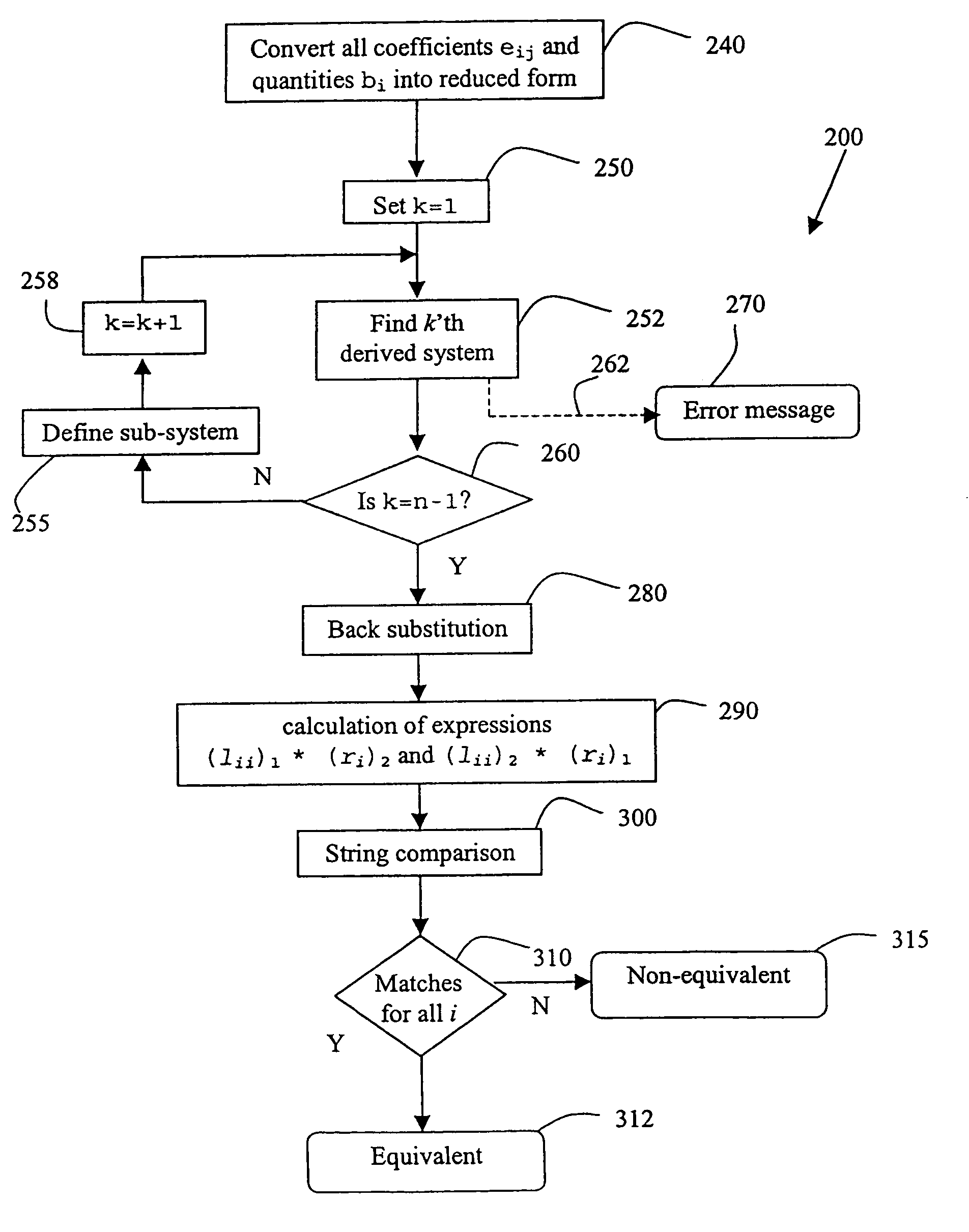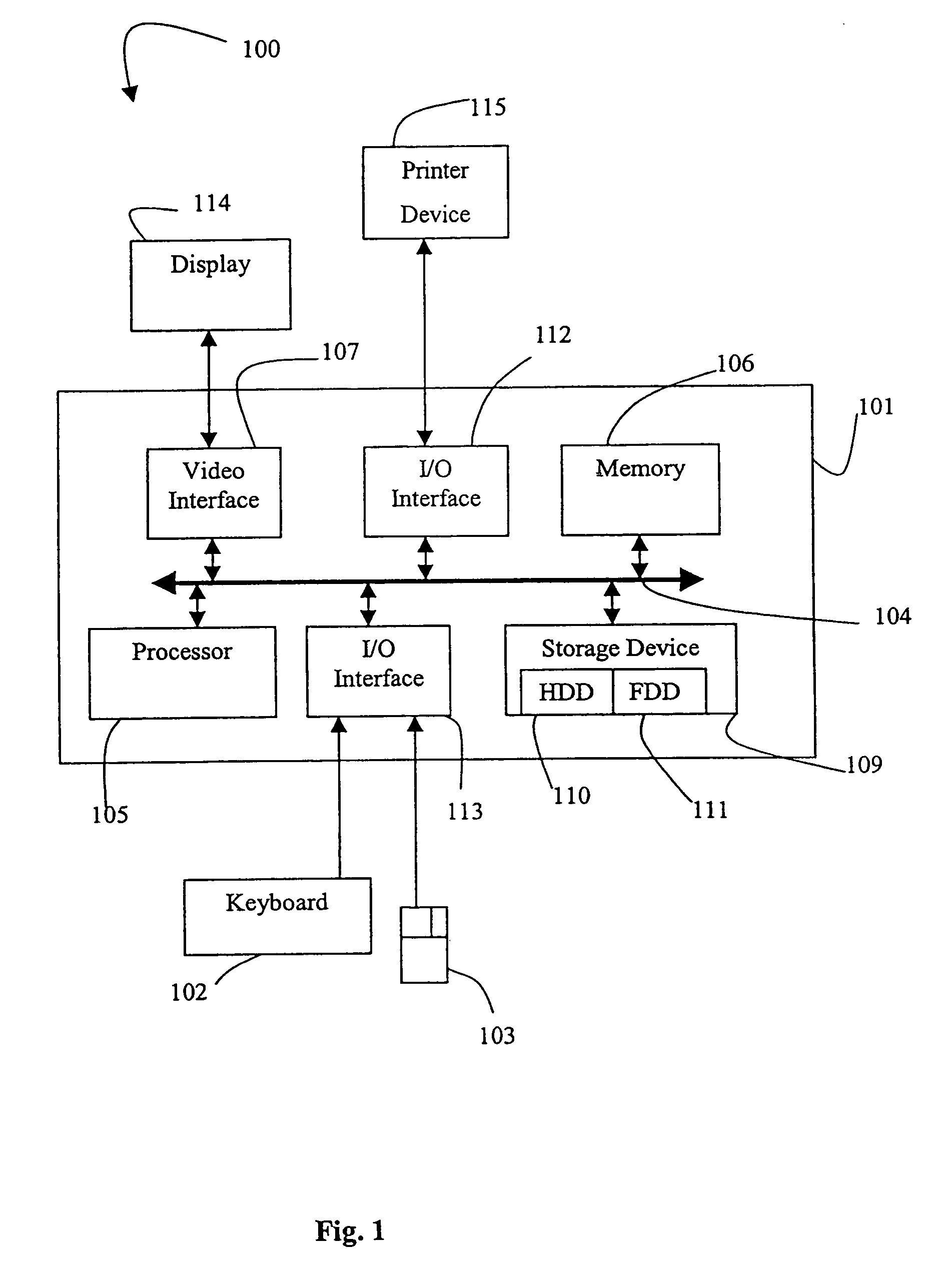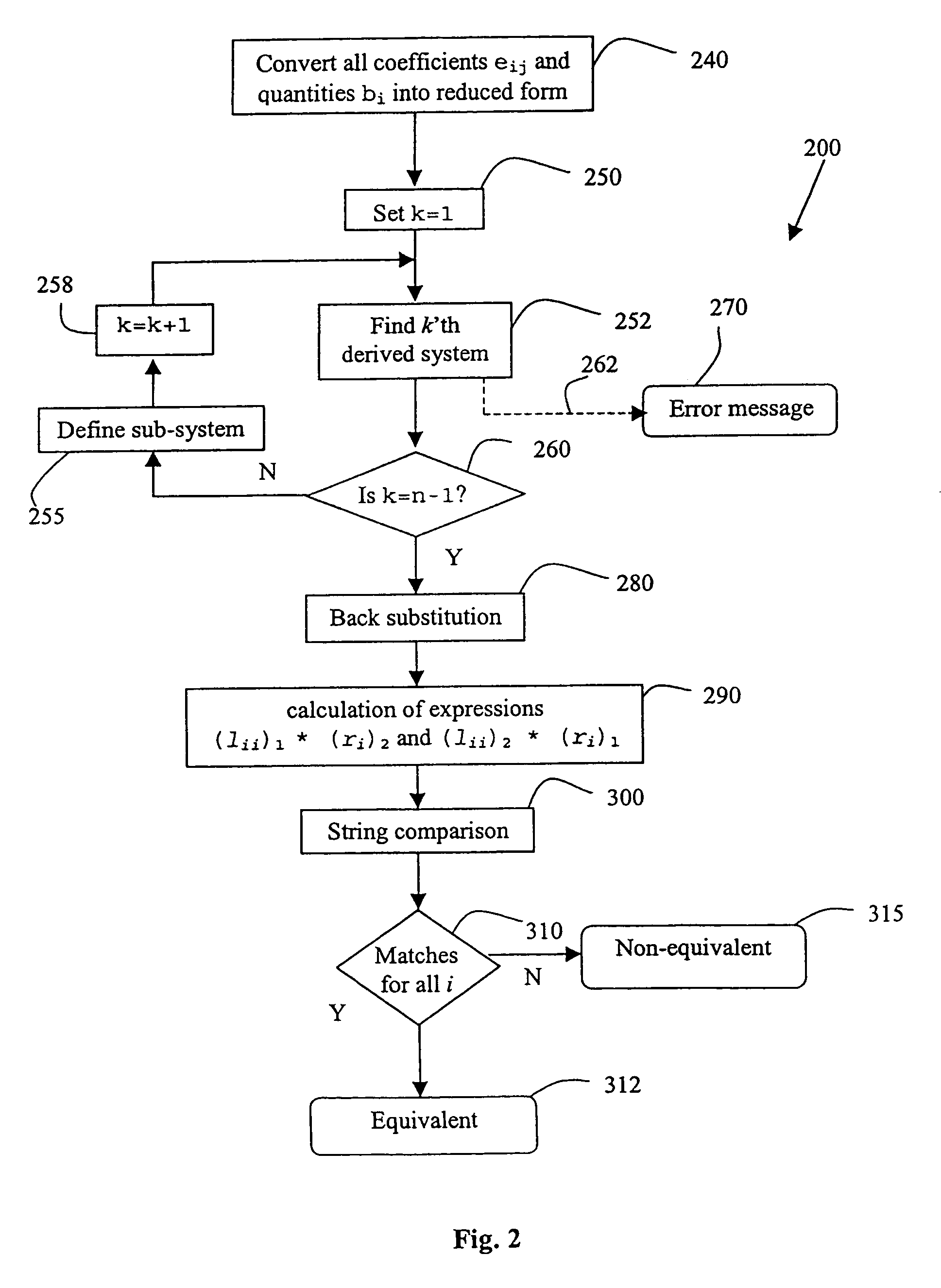Determining the equivalence of two sets of simultaneous linear algebraic equations
a linear algebra and equation technology, applied in the field of computing implementable methods, can solve the problems of insufficient numerical precision in computation, method may not always work, and general inadaptability of methods, so as to reduce string effects
- Summary
- Abstract
- Description
- Claims
- Application Information
AI Technical Summary
Benefits of technology
Problems solved by technology
Method used
Image
Examples
example
[0083]An example of performing the method 200 to determine whether two systems S1 and S2 are equivalent, will now be described. C and C++ programing language notations will be used. In this notation, the coefficients eij and the quantities bi are denoted as e[i−1][j−1] and b[i−1] respectively.
[0084]To understand the example given below, reference to the following pseudo-code fragment will be helpful. The variables e[ ] [ ] and b[ ] are assumed to have the datatype algebraic “expression”, which inter alia will implement the operators ‘+’ (plus), ‘−’ (minus), and ‘*’ (multiplication) operators on such expressions. The class “expression” also has a method which can convert an algebraic expression into its reduced form.[0085] / / Gaussian elimination[0086] / / e[ ][ ] and b[ ] are of type Expression.
for (i=0; i[0087] / / - - - Comment 1 - - -[0088] / / If e[i][i]=0, exchange this row with another below it (say[0089] / / the k-th row, k>i) such that e[i][k] !=0. If no such k is[0090] / / found, exit...
PUM
 Login to View More
Login to View More Abstract
Description
Claims
Application Information
 Login to View More
Login to View More - R&D
- Intellectual Property
- Life Sciences
- Materials
- Tech Scout
- Unparalleled Data Quality
- Higher Quality Content
- 60% Fewer Hallucinations
Browse by: Latest US Patents, China's latest patents, Technical Efficacy Thesaurus, Application Domain, Technology Topic, Popular Technical Reports.
© 2025 PatSnap. All rights reserved.Legal|Privacy policy|Modern Slavery Act Transparency Statement|Sitemap|About US| Contact US: help@patsnap.com



